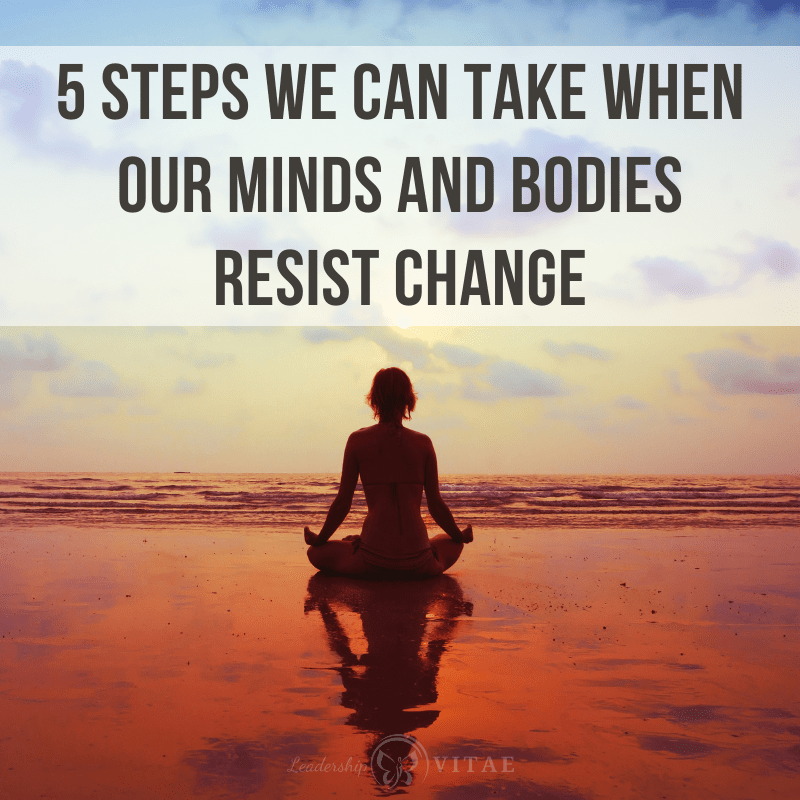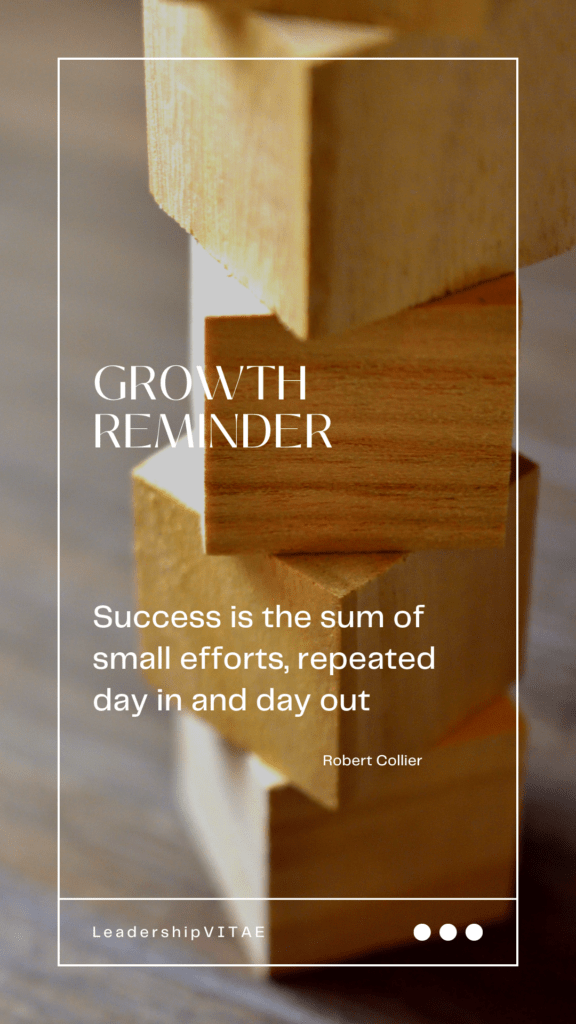
Sustainable change, even when it’s positive, can prove to be difficult. Our minds and bodies are constantly looking for homeostasis at a cellular level. Every time we experience something new, whether positive or negative, there will be a pull back to what is known and comfortable.
While this is the nature of being human, change is a constant. And some change is necessary or even desirable.
Unfortunately, sometimes our minds and bodies resist in a way that makes change difficult. We may experience physical symptoms of discomfort. Headaches or abdominal pain, for example.
My aunt recently experienced some significant change in her life, becoming a widow and moving to independent living.
Historically, she’s had someone else around to do for her and now she’s on her own. The family is relatively close, but if she wants to be independent, she has to make some changes that are at odds with how she’s been living to date.
I tell her regularly that she’s “a grown ass woman” and it’s past time she acts like it. Yet each time we work on something new, she finds herself suffering from headaches or body aches. Ones she wasn’t experiencing until she attempted a change.
We’ve been talking through the resistance her mind and body are experiencing. She is consciously committed but has to push through the unconscious resistance. At the same time, I’m experiencing a similar journey as I work through some health issues. In this case, I’m struggling to accept the change.
Together, we’ve been working through our respective journeys. Following similar steps to trick our minds and bodies into accepting change and creating a new normal.
1. Start small
It may be tempting to jump into change. Guilty party here. If the change is mentally appealing, we might go all in, and then wonder why we can’t maintain the change over time.
Other times, we may resist the idea from the jump. The change may seem insurmountable, and too difficult to begin.
In both cases, start small. Be patient with big change – wanted or unwanted – and decompose it into smaller parts. Pick ONE THING that would help move in that direction. One thing that feels achievable and get started.
2. Push through discomfort
Even if we start small, our brains and bodies are subconsciously smarter than our conscious mind. Tricking ourselves can be difficult, as a small step on a larger journey is still putting us on the path to big change.
We may experience unexpected tiredness, headaches, or body aches. When starting new workouts, we can get muscle soreness. That is the body working in new ways and letting us know it feels the change.
We can decide to stop, or work through the discomfort. I’m in no way suggesting to hurt ourselves or ignore pain. Instead, understand that these signals may be a warning to stop trying to improve or change.
Our bodies may be perfectly happy on the couch. If that’s not what we want, then we can start small and build our way up. But no matter how small we start, we may get signals of discomfort.
The choice we have to make is whether we stop, adjust, or push through, being mindful of any serious pain that we might cause.
3. Try again
When we hit a point of discomfort, it’s a moment for reflection and learning. It’s also a chance to adjust. If we’re doing something new, do we have to modify our commitment or approach to get this first small step to done?
There’s no shame in that. Every signal our minds and bodies give us is a chance to learn. And learning is growth.
We can take those inputs in, reflect on what’s working and what isn’t, and then adjust to keep going. The key is to learn and try again. To press through in a way that works for us.
Maybe we need someone to help guide us. A coach, trainer, or friend. Someone that can help us distinguish between pain and discomfort and recommend adjustments to our approach.
Learning is part of the journey, and often has more value than the change itself. Because everything we learn can be applied again and again. It’s a roadmap for future change.
4. Have grace
We’re going to fall down. If we are trying hard enough, we will always fall down. That’s how we figure out what we’re capable of, extend the boundaries of what’s possible, and how we stretch and grow.
When we’re on the ground (literally or figuratively), we have a choice. We can stay down or get back up. In order to affect any sort of change, we have to get up one more time than the number we fall.
If we beat ourselves up about the falling, it’s less likely we will keep getting back up. So we need to have grace with ourselves. With the journey, the learning, and the falling down. Celebrate the small wins in a big way…because they are each a step towards a new future. A new version of us.
But we can also celebrate grace. How often do we celebrate falling down and not beating ourselves up about it? I can’t remember the last time.
I’ve been working on rewarding myself not just for the small wins, but for having grace with myself during setbacks or learnings as well. Not waiting to get back up before thanking myself for being gentle while I was on the ground.
5. Repeat to win big
Each time we take one step successfully, we have the chance to take another. Over time, the learnings, falling down, and getting back up will become easier. Not because the steps are easier, but because we are stronger.
We begin training our minds and bodies that small changes ARE our normal. To be less reactive to change and begin to accept it.
When our minds and bodies are no longer subconsciously fighting us, and instead are actively working for our success, we will find we can take bigger steps. But if we fall down, we can go back to the beginning and start small to get to that big change we desire.
Success is the sum of small efforts

Small changes, over time, can have a big impact. Often, we don’t realize just how much we’ve accomplished until we look back. But we have to get started to gain that perspective.
All change starts with shifting our mindset to commit to the change. Rather than dive in, we can start small, learn from and adjust to setbacks, and take more small steps towards the future we want.
Have you ever found yourself struggling to get change to stick? What other steps would you recommend to move past the initial discomfort and make change permanent? Please share your thoughts in the comments below.








